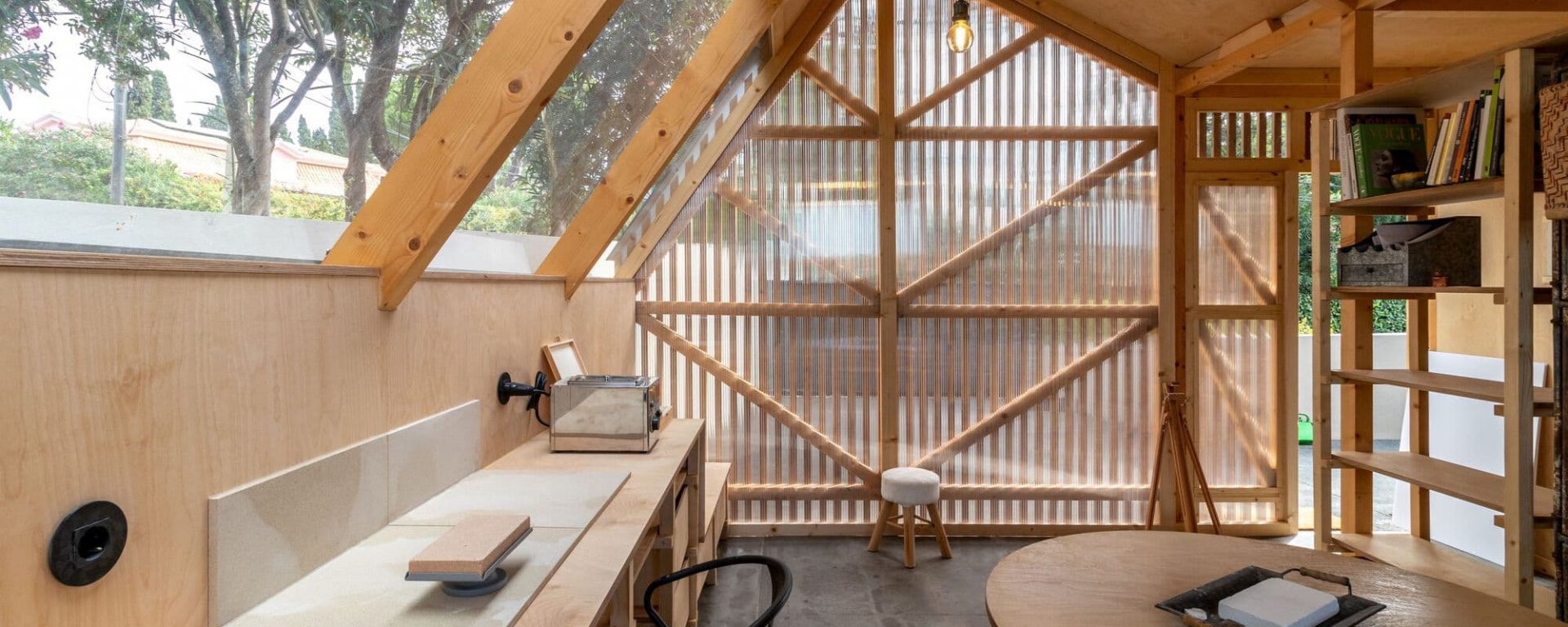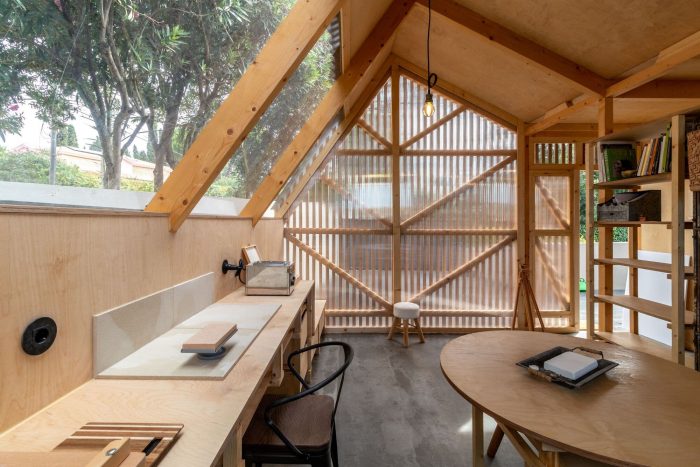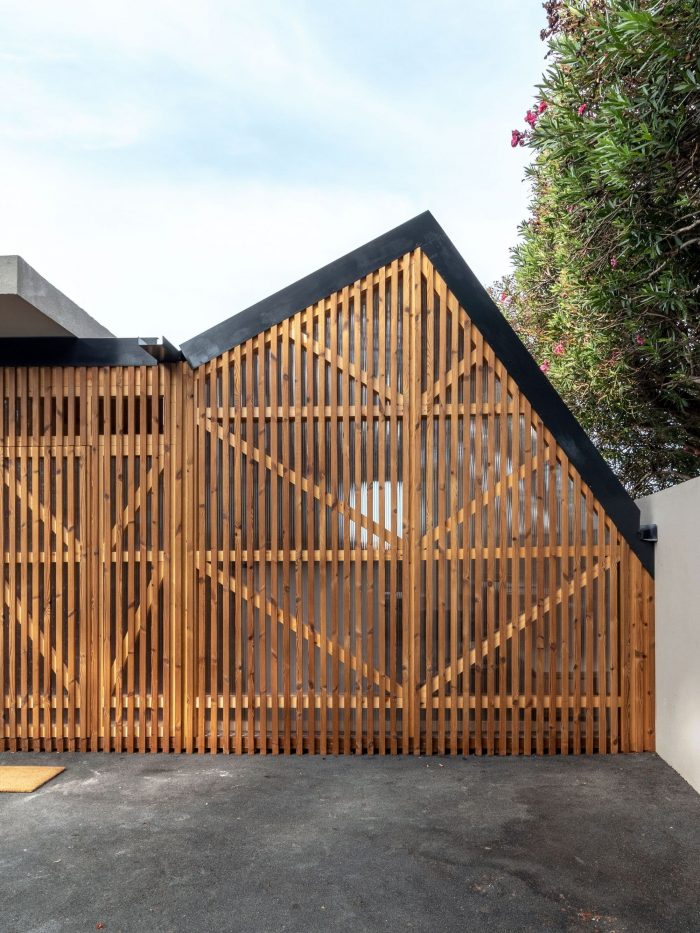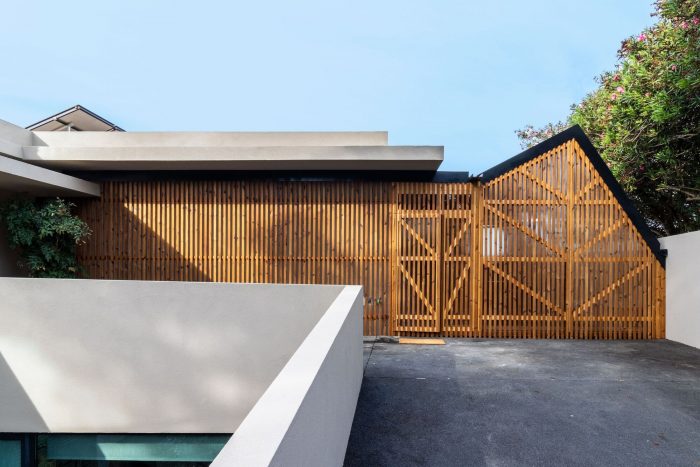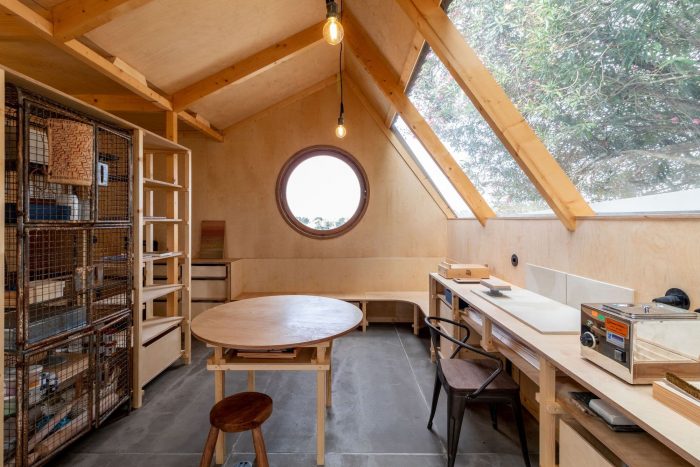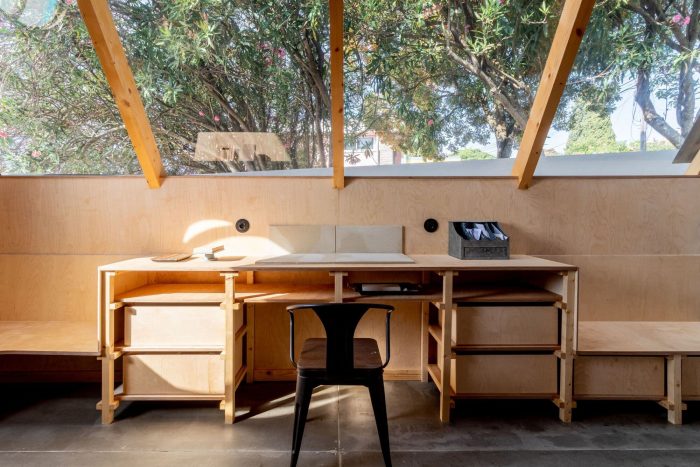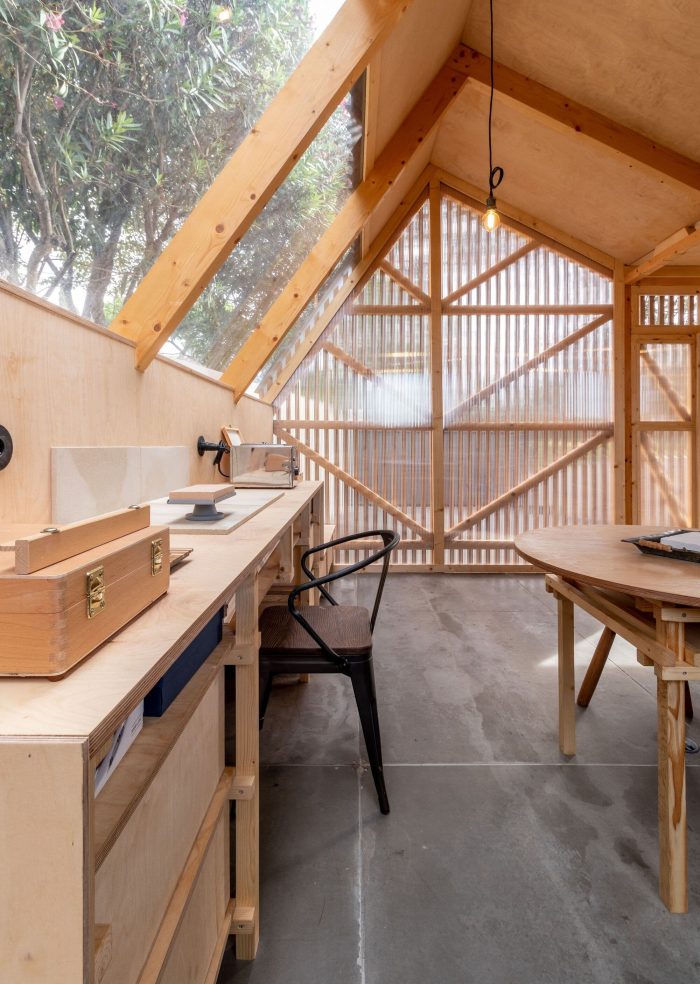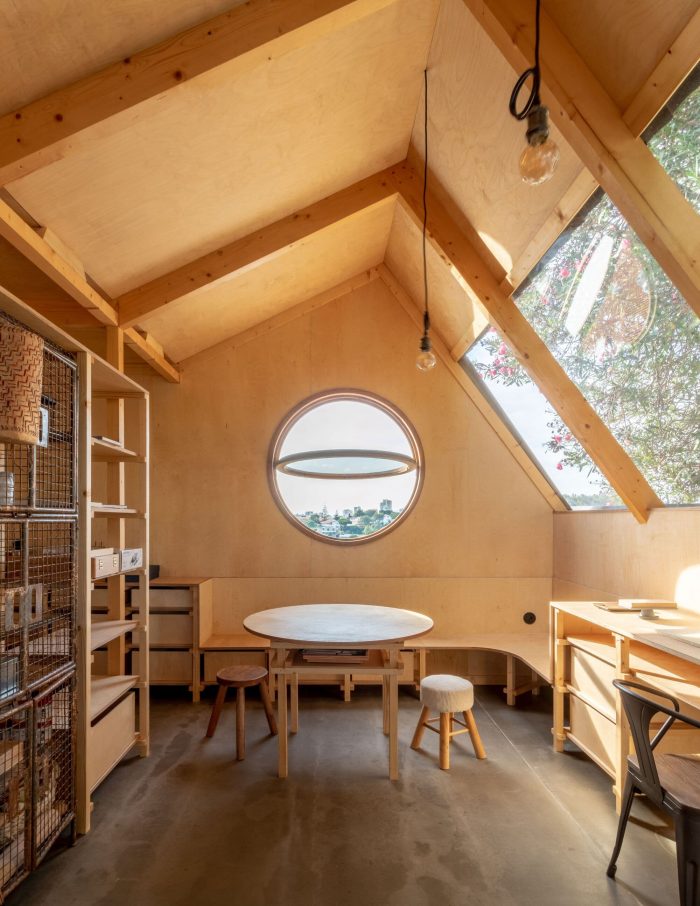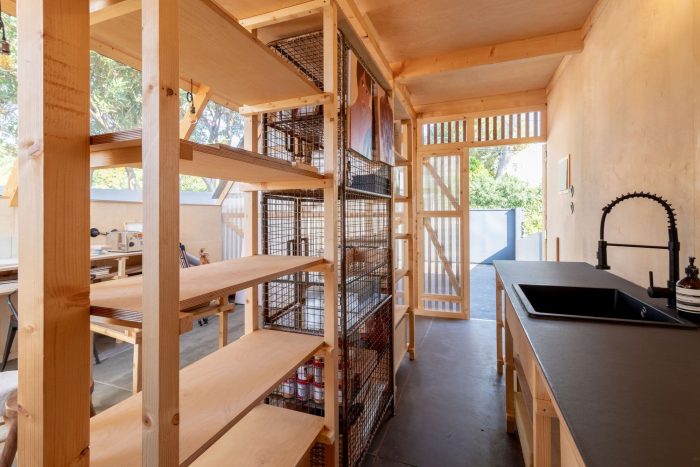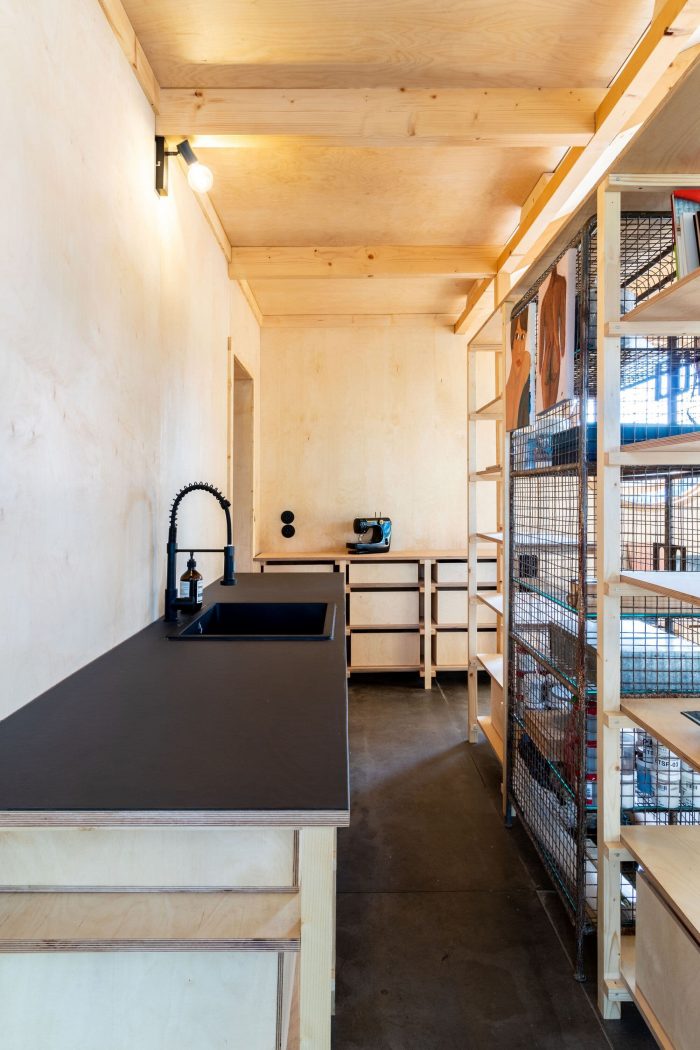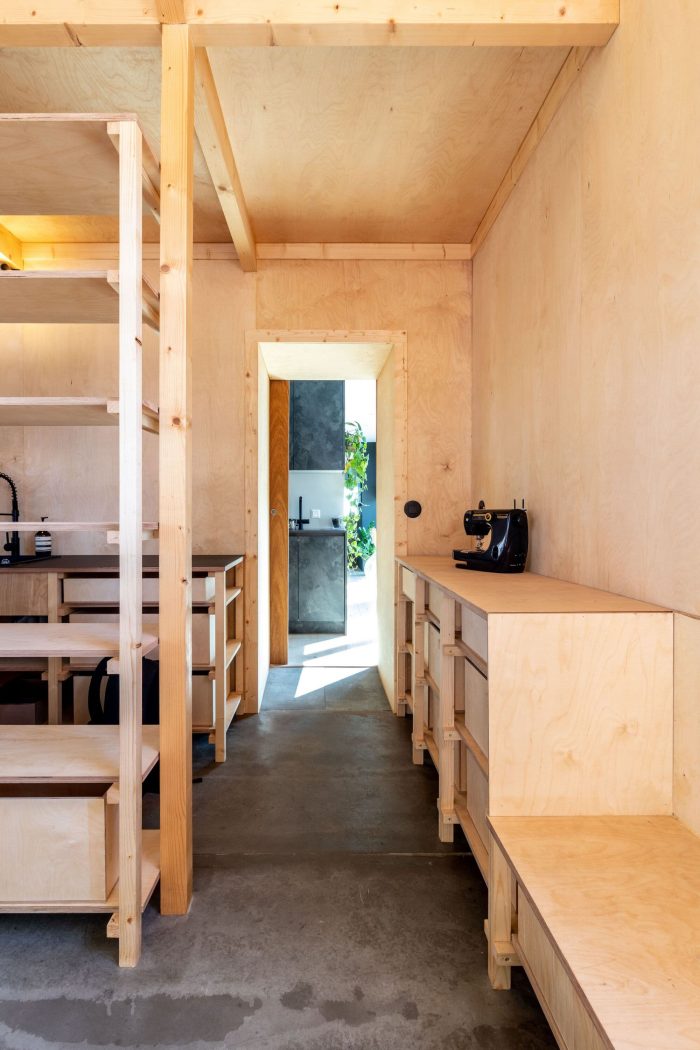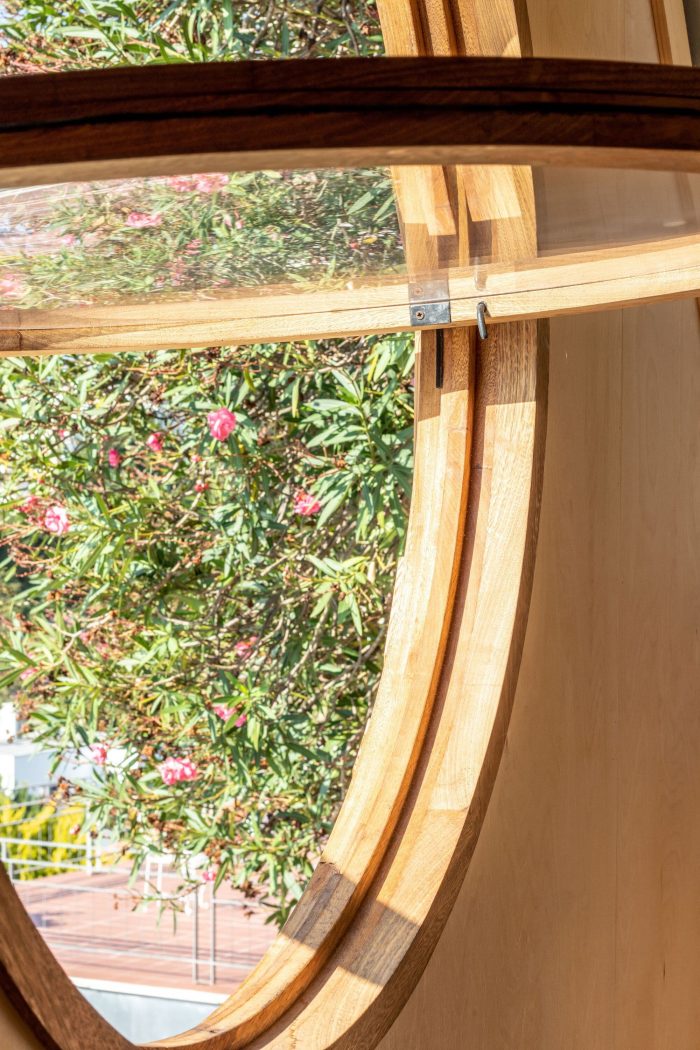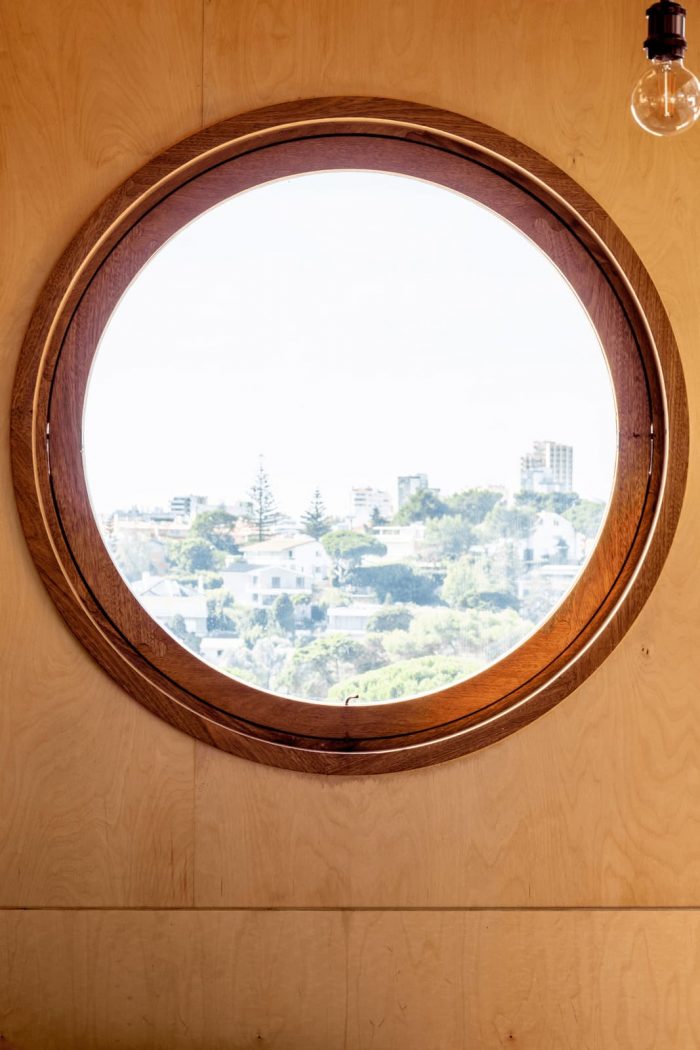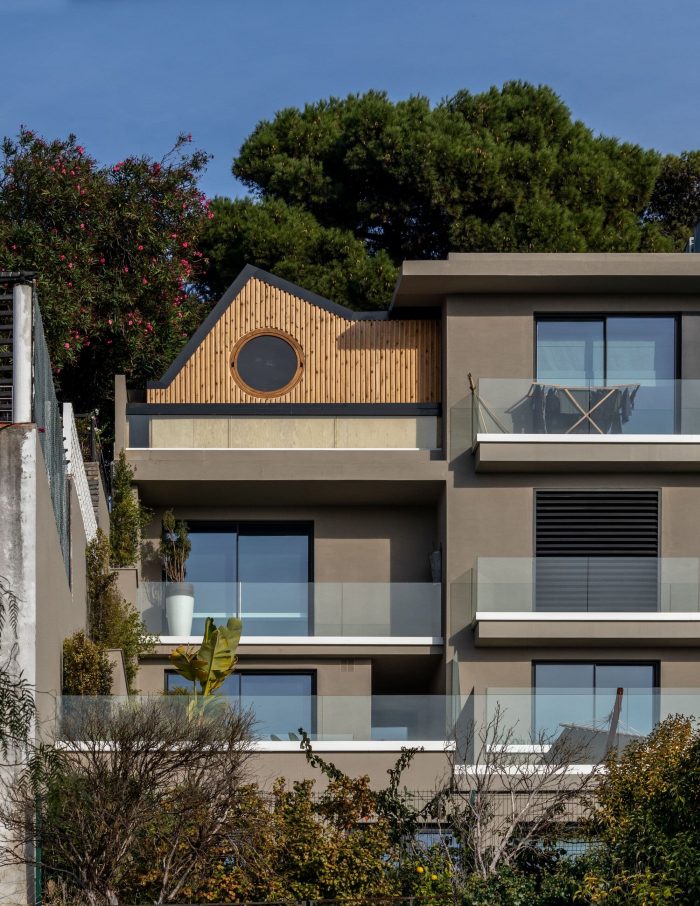我们接受了一位葡萄牙女工匠的挑战,在她的房子旁边设计和建造一个陶瓷工作室,那里以前有两个停车位。这位工匠在多个领域进行研究工作,如陶瓷、珠宝和绘画,因此需要一个多功能的空间,使与她的工作相关的多样化任务能够以一种流畅和有组织的方式进行。
We were challenged by a Portuguese craftswoman to design and build a ceramic studio adjacent to her house, where there were previously two parking spaces. The artisan carries out research work in several areas, such as ceramics, jewelry, and painting, thus needing a multifunctional space that allows the diversity of tasks associated with her work to be carried out in a fluid and organized way.
在寻找设计参考时,与客户一起,决定将斯堪的纳维亚的概念 “Hygge “作为这个项目的支柱。”Hygge “并没有直接翻译成葡萄牙语。它是一种无形的东西,与传递宁静、庇护、舒适和温暖的精神状态有关。简而言之,当在一个你可以称之为家的舒适的地方进行时,它给我们一种愉快的幸福感和对日常工作的赞赏。
In the search for design references, together with the client, it was decided that the Scandinavian concept “Hygge” would be the anchor of this project. “Hygge”, does not have a direct translation into Portuguese. It is something intangible and associated with a state of mind that transmits serenity, shelter, comfort, and warmth. In short, it gives us a pleasant feeling of well-being and appreciation for everyday tasks, when performed in the comfort of a place that you can call home.
因此,我们试图探索如何采取与建筑和室内设计项目有关的决定,如形式、材料、视图系统、自然和人工照明、空间的组织和渗透性、固定和移动家具、与外部的关系以及与城市环境的融合,目的是传递上述与 “hygge “概念有关的感觉。
Therefore, we tried to explore how the decisions related to the architectural and interior design project, such as form, materiality, view systems, natural and artificial lighting, organization and permeability of spaces, fixed and mobile furniture, relations with the exterior, and integration in the urban context, could be taken with the aim of transmitting the sensations mentioned above and related to the “hygge” concept.
关于工作室的总体形状,在与房子相邻的公园里,我们选择了一个平屋顶,延续了房子的屋顶。在面向邻居的部分,我们选择了屋檐屋顶,这让我们想起了家的感觉,有利于收集的雨水的流动,并且可以让你从里面欣赏到树木,使它们成为工作室体验的一部分。
Regarding the general shape of the studio, in the park adjacent to the house, we opted for a flat roof, continuing the roof of the house. In the part facing the neighbor, we opted for a gable roof, which reminds us of the feeling of home and facilitates the flow of the rainwater that would be collected and which allows you to admire the trees from within, making them part of the studio experience.
在材料方面,我们选择使用云杉木作为可见的结构,使用桦木胶合板作为内墙以及家具。由于木材是一种有生命力的材料,我们通过不同的色调、纹理和所用木材的脉络方向之间的宁静对话,来获得所需的气氛和环境。在地板上,我们选择了纤维水泥地板,使其具有更多的工业外观。
With regard to materiality, we chose to use spruce wood for the visible structure and birch plywood for the interior walls as well as the furniture. As wood is a living material, it was through the serene dialogue between the different tones, textures, and orientation of the veins of the wood used that we sought to obtain the desired atmosphere and environment. On the floor, we opted for a fiber-cement floor to give it a more industrial look.
当我们参观了工匠的房子,工作室/工作室将与之相连,我们验证了这里有一个持续存在的光线,以及与景观的广泛和优越的关系,这一点被房子里的大窗户所强化。在工作室里,我们选择了一个朝内的空间,与现有建筑的大窗户相对立,将与景观(海洋和城市)的这种关系的所有张力/特权集中在一个单一的元素上,即作为微光的圆形窗户。
When we visited the artisan’s house, to which the studio/atelier would be attached, we verified that there is a constant presence of light and a broad and privileged relationship with the landscape, which is intensified by the large windows in the house. In the studio, we opted, in opposition to the large windows of the existing construction, for a space facing inwards, concentrating all the tension/privilege of this relationship with the landscape (sea and city) in a single element, the circular window that works as an oculus.
在工作室的入口处,我们选择了一个半透明的聚碳酸酯结构,使散射光进入空间,同时使空间变得温暖而宁静。从内部看,这个立面的木质结构受到了葡萄牙传统抗震结构(”gaiola pombalina”)的影响。从外立面来看,我们选择了一个中空的垂直板条面板,它穿透了现有建筑的混凝土外墙,就像一个寄生结构,它扩散并最终成为一个独特系统的一部分。这样一来,从外面看,现有建筑和新的工作室/工作室之间没有任何分隔。
On the studio’s entrance facade, we opted for a translucent structure in alveolar polycarbonate that allows diffused light to enter the space, making the space warm and serene at the same time. From the inside, this facade has a wooden structure influenced by the traditional Portuguese anti-seismic structures (“gaiola pombalina”). From the outside of the facade, we opted for a hollow and vertical slatted panel that penetrates the concrete facade of the existing construction, like a parasitic structure, which spreads and ends up being part of a unique system. In this way, from the outside, no separation between the existing building and the new studio/atelier is seen.
关于家具,由于工作室/工作室是一个具有巨大多样性的物体、工具和任务的空间,我们选择用自由安装盒来设计和建造家具,这有利于空间的安排。反过来,家具结构的设计和建造也采用了标准化和重复性的配件结构,这给创作过程带来了秩序,并与工作室的结构节奏进行了对话。圆桌的形状和尺寸与圆窗相同,是使流通流畅的破坏性元素,并将工作室中存在的各种元素联系起来。
Regarding furniture, since the studio/atelier is a space with a huge diversity of objects, tools, and tasks, we chose to design and build the furniture with free installation boxes, which facilitate the space’s arrangement. The furniture structure was, in turn, designed and built with a structure of standardized and repetitive fittings, which give order to the creative process and which dialogue with the rhythm of the structure of the studio. The circular table has the same shape and dimensions as the round window and is the disruptive element that makes circulation fluid and links the various elements present in the studio.
Architects: Madeiguincho
Year : 2021
Country:Portugal

